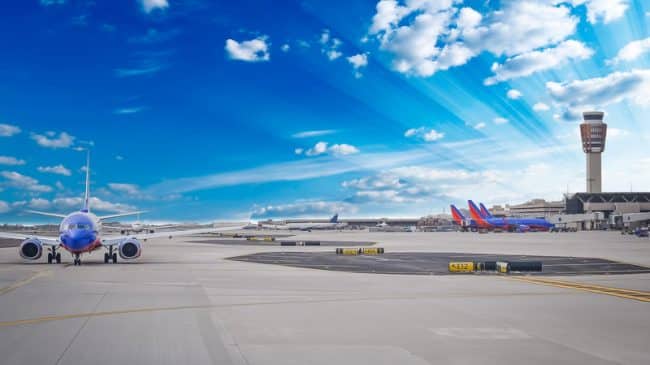Many new technologies, such as powerful computers in ATC facilities and collision avoidance systems in aircraft, have made air travel progressively safer and more reliable. But the basic features and procedures of the 1960s ATC system have remained remarkably unchanged through a half century of dramatic advances in technology and management in many other realms. And in recent years, the U.S. system has fallen well behind the capacity of new technologies to provide safer, faster, more reliable and more fuel-efficient air travel and to keep pace with the increasing volume of air traffic.
Our ability to provide a vastly improved system is not in question. Over the past two decades, aviation experts have developed a new air traffic paradigm-often called air traffic management, or ATM, to emphasize its use of much richer information than a single locus of “control.” Under this framework, technologies such as digital communications and GPS could facilitate automating much of the routine separation of aircraft, permitting far greater use of the entire airspace than the limited “airways” defined by ground-based navigation aids. New technologies and procedures would also increase the effective capacity of airport runways, improve landing protocols, transform staffed ATC facilities on the ground, and provide pilots with more accurate and timely information on weather and other variables.
Unfortunately, progress toward implementing advanced ATM in the United States (where the system is called “NextGen”) has been far slower than anticipated. This report uses case studies of seven critical elements of NextGen to examine the problems encountered in the U.S. effort:
- digital communications between pilots and controllers;
- GPS-based landing as a replacement for legacy instrument landing systems;
- GPS aircraft surveillance as a replacement for ground radar (for most purposes);
- “performance-based navigation”;
- real-time aviation weather data;
- remote airport towers employing digital imaging, and
- air traffic facilities consolidation.
Several important lessons emerge from these studies. The FAA is slow to embrace promising innovations that originate in outside research organizations or private-sector companies. When the agency does embrace something new, it has a hard time defining its requirements and often delegates this task to contractors-who come up with many add-on functions that increase cost and make implementation more complex. And the FAA does a poor job of procuring new technology, with many programs eventually cancelled or emerging years late at inflated cost. The agency is particularly resistant to high-potential innovations that would disrupt its own institutional status quo-such as performance-based navigation, real-time weather and remote towers.
This report identifies five institutional factors that account for the FAA’s status-quo bias:
- The FAA is both the ATC service provider and the aviation safety regulator, and its self-identity as a safety agency has led to an over-cautious culture that is unlike that of aerospace companies, which are regulated for safety at arm’s length by the FAA.
- Over the years, the FAA has experienced a brain drain, losing the best and the brightest engineers to the private sector, which provides better compensation and a more challenging work culture.
- For similar reasons, the FAA has lost program management expertise, making it overly reliant on contractors it has difficulty controlling.
- Given the FAA’s long history of problems, it must contend with oversight from the GAO, the Inspector General, a number of congressional committees, the Office of Management and Budget, and the Department of Transportation, all of which divert considerable management attention.
- As a result, the FAA tends to focus on pleasing its various political overseers rather than its aviation customers, who are directly concerned with the quality, effectiveness and cost of ATC.
These findings lead to the conclusion that reform of the U.S. air traffic system’s funding and governance-organizational reform-is the key to a full embrace of advanced ATM in the United States. The three necessary changes are:
- Separate the FAA’s Air Traffic Organization (ATO) from the rest of the agency, making it an ATC provider like those overseas. The new entity would be regulated at arm’s length by the remaining part of the FAA, which would become exclusively an air safety regulator. This would be analogous to the highly successful 1987 divestiture of Dulles International and Washington National Airport from the FAA to a self-funded airports authority.
- Shift from funding ATC from aviation user taxes-which must be appropriated each year as part of the federal budget-to charges paid by aviation customers directly to the revamped ATO, which could then issue revenue bonds for large-scale capital modernization as do airports, electric utilities, railroads and other infrastructure providers.
- Provide for a governing board that represents the key aviation stakeholders, as is done with the ATC corporations in Canada and the UK. The board, representing aircraft operators, airports and ATC employees, would set policies for the corporation, including decisions on whether new technologies and procedures have positive business cases. A model for this kind of decision-making is the role played by the current NextGen Advisory Committee, which represents a broad coalition of aviation stakeholders.

